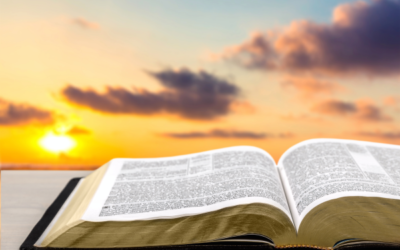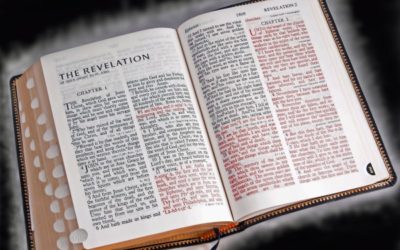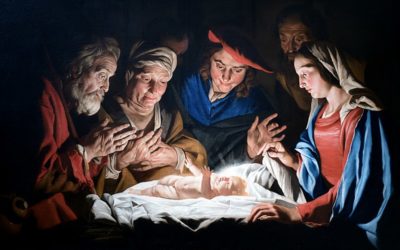During the many years in which I was associated with the Church History Museum, I was intrigued to watch the submissions for our triennial international art competitions. Certain subjects tended to appear over and over again in the submissions, and one of those was the Liahona. The Liahona is an excellent example of how God can work through physical objects for those who have faith.
How It Worked
In 1 Nephi chapter 16 in the Book of Mormon, Nephi recounts how the Lord spoke to his father at night, commanding him “that on the morrow he should take his journey into the wilderness” (verse 9). To help guide Lehi, the Lord provided a physical tool to help focus his faith. “As my father arose in the morning, and went forth to the tent door,” Nephi relates, “to his great astonishment he beheld upon the ground a round ball of curious workmanship” (verse 10).
Pointing the Way
This “fine brass” device had at least two functions. The first was directional. “Within the ball were two spindles,” Nephi explains, “and the one pointed the way whither we should go into the wilderness” (verse 10). Nephi also observes that “the pointers which were in the ball . . . did work according to the faith and diligence and heed which we did give unto them” (verse 28).
By following “the directions of the ball,” Lehi and his family were led “in the more fertile parts of the wilderness” (verse 16). In other words, they generally prospered.
But it didn’t keep them from experiencing the trials that are an essential part of growing and progressing spiritually. Despite being led in fertile areas, they ran out of food, and Nephi broke his steel bow, making it harder to hunt up food (verses 17‒19).
This trial tested their faith and provided an opportunity for them to grow. Some in their company began “to murmur exceedingly, because of their sufferings and afflictions in the wilderness,” and even Lehi “began to murmur against the Lord his God,” Nephi wrote (verse 20).
Nephi chose a better option. He exercised faith—a combination of belief and works—by making a bow and arrow and approaching his prophet-father to ask, “Whither shall I go to obtain food?” (verse 23). This question caused Lehi to repent and “inquire of the Lord,” who chastised him for his murmuring (verses 24‒25).
Suiting a Message to the Moment
Lehi humbled himself and “was brought down into the depths of sorrow” because of his sin (verse 25). The Lord commanded him, “Look upon the ball, and behold the things which are written” (verse 26).
This commandment highlighted a second function of the Liahona, which was to communicate messages suited for the moment. Nephi says the instrument displayed “a new writing, which was plain to be read, which did give us understanding concerning the ways of the Lord; and it was written and changed from time to time, according to the faith and diligence which we gave unto it” (verse 29).
When Lehi repented of his murmuring and “beheld the things which were written upon the ball, he did fear and tremble exceedingly, and also my brethren and the sons of Ishmael and our wives,” Nephi wrote (verse 27). But Lehi also obtained the answer to his prayer about where Nephi should go to obtain food for them.
Nephi followed “the directions which were given upon the ball” and “did obtain food for our families,” he wrote. And when his family members saw the food, “how great was their joy!” They humbled themselves and thanked the Lord for this great blessing. (Verses 30‒32.)
Remember or Forget
The Book of Mormon frequently admonishes readers to remember what the Lord has done for the faithful (see, e.g., 1 Nephi 7:11). Nephi’s brothers Laman and Lemuel kept forgetting, which got them into serious trouble over and over again. During their overseas voyage described in 1 Nephi 18, they began to assume that so long as they had the Liahona, they could find their way to the Promised Land. They forgot that without faith and diligence, it was just a fancy hunk of brass.
Laman and Lemuel began to get out of control during the voyage, and when Nephi tried to correct them, they “bound me,” he wrote, “insomuch that I could not move.” At that point, “the compass,” or Liahona, “which had been prepared of the Lord, did cease to work.” (Verse 12.)
If Laman and Lemuel understood why it stopped working, they were too stubborn to admit they were wrong. It took days of stormy weather and fear of being “swallowed up in the depths of the sea” to make them release Nephi. (Verses 13‒15.)
“After they had loosed me,” Nephi writes, “behold, I took the compass, and it did work whither I desired it. And it came to pass that I prayed unto the Lord; and after I had prayed the winds did cease, and the storm did cease, and there was a great calm. And . . . I, Nephi, did guide the ship, that we sailed again towards the promised land.” (Verses 21‒22.)
This pattern continued thereafter. Speaking of how the Liahona operated, Mosiah 1:17 explains, “Therefore, as they were unfaithful they did not prosper nor progress in their journey, but were driven back, and incurred the displeasure of God upon them; and therefore they were smitten with famine and sore afflictions, to stir them up in remembrance of their duty.”
What Happened to the Liahona
When Nephi permanently split from his brothers in 2 Nephi 5, he took the brass plates “and also the ball, or compass, which was prepared for my father by the hand of the Lord, according to that which is written” (verse 12). When King Benjamin appointed his son Mosiah to be his successor, he “gave him charge concerning the records which were engraven on the plates of brass; and also the plates of Nephi; and also, the sword of Laban, and the ball or director, which led our fathers through the wilderness, which was prepared by the hand of the Lord that thereby they might be led, every one according to the heed and diligence which they gave unto him” (Mosiah 1:16). From that point on, the Liahona was apparently passed down as part of the sacred archive that eventually ended up in Moroni’s possession.
In June 1829, in a revelation that is now Doctrine and Covenants 17, the Lord promised Oliver Cowdery, David Whitmer, and Martin Harris that they should “have a view of the plates, and also of the breastplate, the sword of Laban, the Urim and Thummim, which were given to the brother of Jared upon the mount, when he talked with the Lord face to face, and the miraculous directors which were given to Lehi while in the wilderness, on the borders of the Red Sea” (verse 1). This promise was fulfilled, and the Three Witnesses to the Book of Mormon saw the Liahona displayed by the angel along with the golden plates and other sacred objects.
You Can Enjoy the Blessings of a Liahona
Would you like the blessings of owning a Liahona? You can have them under the same conditions Lehi and Nephi did.
In Alma 37, as Alma the Younger passed the sacred objects to his son Helaman, he admonished him, “keep all these things sacred which I have kept, even as I have kept them” (verse 2). Alma then described and explained for Helaman some of the sacred objects, including the Liahona, and the lesson he taught his son is relevant to all of us.
“And now, my son,” Alma began, “I have somewhat to say concerning the thing which our fathers call a ball, or director—or our fathers called it Liahona, which is, being interpreted, a compass; and the Lord prepared it. And behold, there cannot any man work after the manner of so curious a workmanship. And behold, it was prepared to show unto our fathers the course which they should travel in the wilderness.” (Verses 38‒39.)
“And it did work for them according to their faith in God,” he emphasized. “Therefore, if they had faith to believe that God could cause that those spindles should point the way they should go, behold, it was done; therefore they had this miracle, and also many other miracles wrought by the power of God, day by day.” (Verse 40.)
But “they were slothful,” Alma warned, “and forgot to exercise their faith and diligence and then those marvelous works ceased, and they did not progress in their journey; therefore, they tarried in the wilderness, or did not travel a direct course, and were afflicted with hunger and thirst, because of their transgressions.” (Verses 41‒42.)
Then Alma taught Helaman a lesson that Mormon, the compiler of the Book of Mormon, intended for us to read in our day. “And now, my son,” Alma said, “I would that ye should understand that these things are not without a shadow; for as our fathers were slothful to give heed to this compass (now these things were temporal) they did not prosper; even so it is with things which are spiritual. For behold, it is as easy to give heed to the word of Christ, which will point to you a straight course to eternal bliss, as it was for our fathers to give heed to this compass, which would point unto them a straight course to the promised land.” (Verses 43‒44.)
In other words, we don’t need a brass instrument to enjoy the benefits of a Liahona. If we will study the scriptures—”the word of Christ”—we will be pointed in the direction we should go and will receive specific promptings or messages as we study the scriptures that will be suited for the moments in which we find ourselves, providing specific guidance in meeting our daily challenges.
As Alma taught Helaman, “For just as surely as this director did bring our fathers, by following its course, to the promised land, shall the words of Christ, if we follow their course, carry us beyond this vale of sorrow into a far better land of promise” (verse 45). As Alma cautioned Helaman, alluding to another physical object of faith, the brass serpent, “Do not let us be slothful because of the easiness of the way; for so was it with our fathers; for so was it prepared for them, that if they would look they might live; even so it is with us. The way is prepared, and if we will look we may live forever.” (Verse 46, referring to 1 Nephi 17:41.)
Pick up that physical book we call the scriptures, or look at it on your electronic device, and realize that you too can handle something just as marvelous as the Liahona, a seer stone, or the rod of Moses and Aaron.
Credit for image at top of page: Detail from Arnold Friberg’s painting The Liahona.



